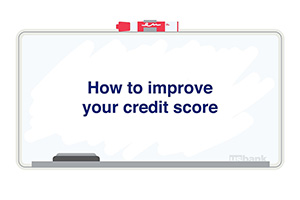
6 essential credit report terms to know

How to improve your credit score

Reviewing your credit report is an important part of staying on top of your financial situation. These reports are designed to serve as a resource for lenders, so they can assess whether you’re eligible for credit or a loan approval. Your credit score and the data in your report also affect the interest rate you’re offered. Because employers, insurers and rental property owners all review credit reports, it’s a good idea to make sure your information is accurate and up to date on a regular basis. Let’s take a look at some key concepts and terms to understand when looking at your credit report.
You can request a copy of your complete credit report through one of three major credit bureaus. Within the report, you’ll find four different sections with data about your personal background, account history and more.
This is typically the first section of the report, and where you’ll find basic information about yourself including your name, birth date, past and current addresses, past and current employers, and your social security number.
The section of the report lists any lines of credit you’ve opened in recent years. You’ll find detailed information about every credit card, bank or alternate creditor account that’s been opened under your name. This includes open and close dates, credit limits and payment history.
Any time your credit report is requested by someone other than you – such as insurers, lenders and credit card companies – it’s documented here. This section provides a complete list of any parties that have seen your report in the last two years. Because some inquiries indicate that you were considering taking on a new type of debt, they can lower your credit score slightly.
For example, if you plan to buy a home and seek a mortgage loan, a mortgage lender would request information on your credit standing. This would then be listed in the inquiries portion of your report. However, if you meet with multiple lenders within a 45-day period, these credit requests will be listed as a single inquiry, with minimal impact on your credit score. Before applying for a mortgage loan, be sure to obtain a copy of your own record to verify that everything is correct. It’s best to avoid applying for a new credit card or taking out a new loan once you begin or plan to seek a mortgage as well.
This section of the credit report displays any negative financial information or bankruptcies under your name. This information is accessed through the court system, and poorly affects your score. It may stay on the report for up to 10 years.
Within these four primary categories, you may see some of the following terms.
Being aware of these credit report categories and having familiarity with the terms and definitions used will help you fully understand your file. You’ll be able to assess what the information means and whether there are certain areas where you can improve. By learning from your previous choices and working to build a solid credit score, you’ll enjoy more financial freedom and empowerment.
Related content


